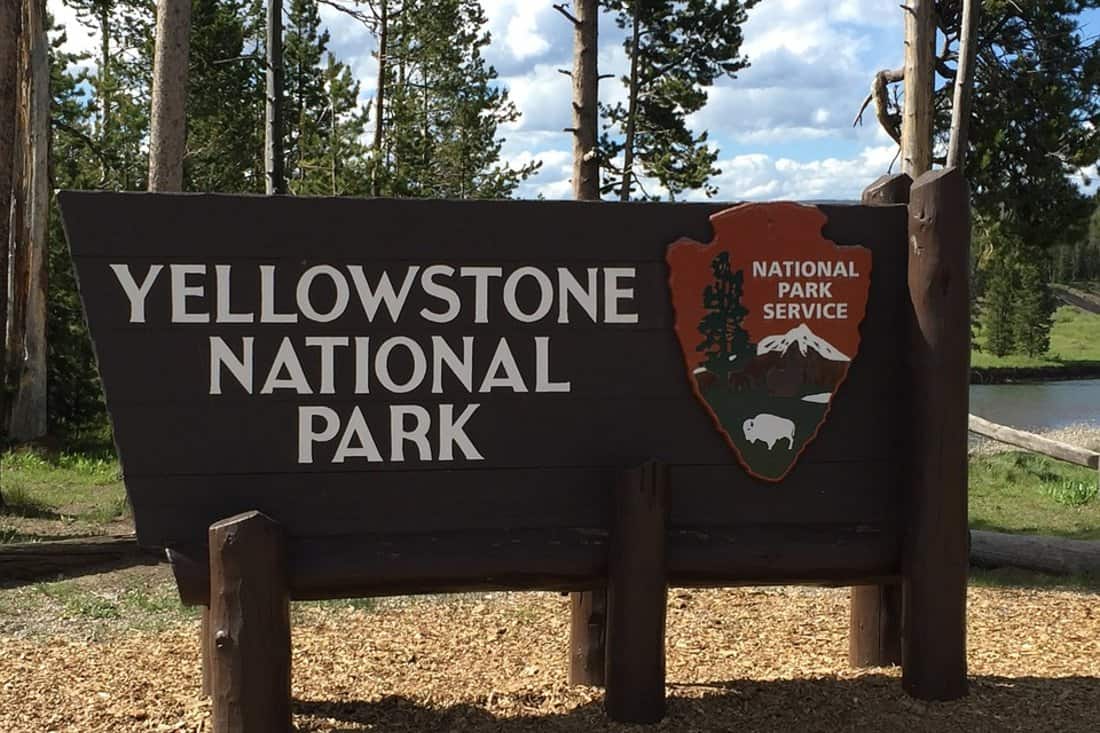At 3,486 sq mi, Yellowstone is the largest national park in the US. It is also the oldest park, not only in the US but in the world. The park receives millions of visitors annually. Nevertheless, the park is associated with dangers such as forest fires, wild animal attacks, drownings, and thermal burns among others.
Is hiking in Yellowstone safe? Hiking in Yellowstone National Park is safe, as long as you follow the safety guidelines and exercise self-responsibility. Potential safety hazards in Yellowstone include wildlife, thermal activities, high altitude, and extreme weather conditions. Safety measures and guidelines have been put in place by the national park service to protect these natural attractions and to keep you safe.
In this article, I have explained 10 essential safety tips to guide you through your hiking adventure in Yellowstone. I have also highlighted what you should expect in Yellowstone during every season in terms of the weather, condition of hiking trails, and common happenings. Lastly, I have shared some facts about Yellowstone that might just heighten your interest.
Is Hiking in Yellowstone Safe? 10 Essential Safety Tips
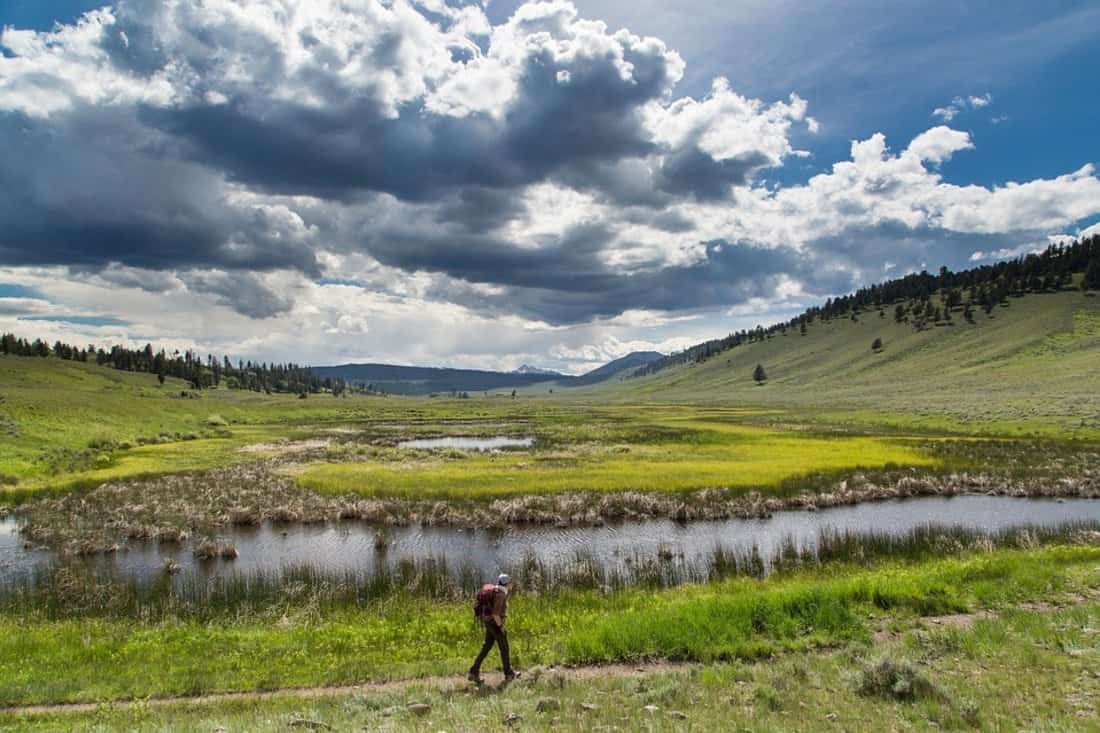
To hike safely in Yellowstone, you have to be aware of all the dangers that you may encounter in the park. I have outlined and explained 10 actionable tips below.
1. Take It Easy on the Altitude
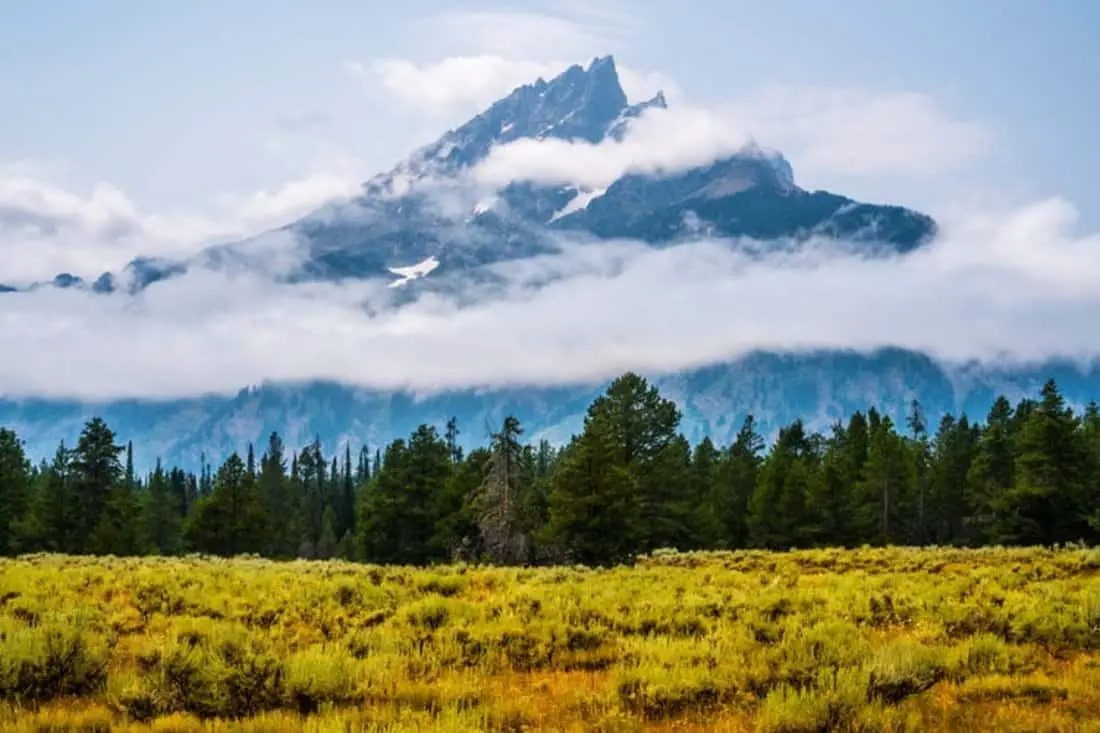
Yellowstone National Park is at a high altitude, with some of the best hikes at over 7000 ft. Actually, some areas of the park are above 11,000 ft.
With high altitude comes mountain sickness. Also known as high-altitude sickness, this is an illness that makes you feel like you are suffering from an acute hangover. Symptoms include fatigue, frequent naps, nausea, and headaches.
To avoid or at least control high-altitude sickness, give your body time to get used to the high altitude. How do you do that? For the first few miles of your hike, take short breaks of about 10 minutes each (even experienced hikers find it difficult to hike in high altitudes). Also, drink lots of water to avoid headaches. It’s possible to see your doctor for medication before starting the hike – it’s recommended for “first time” hikers.
2. Be Bear Aware
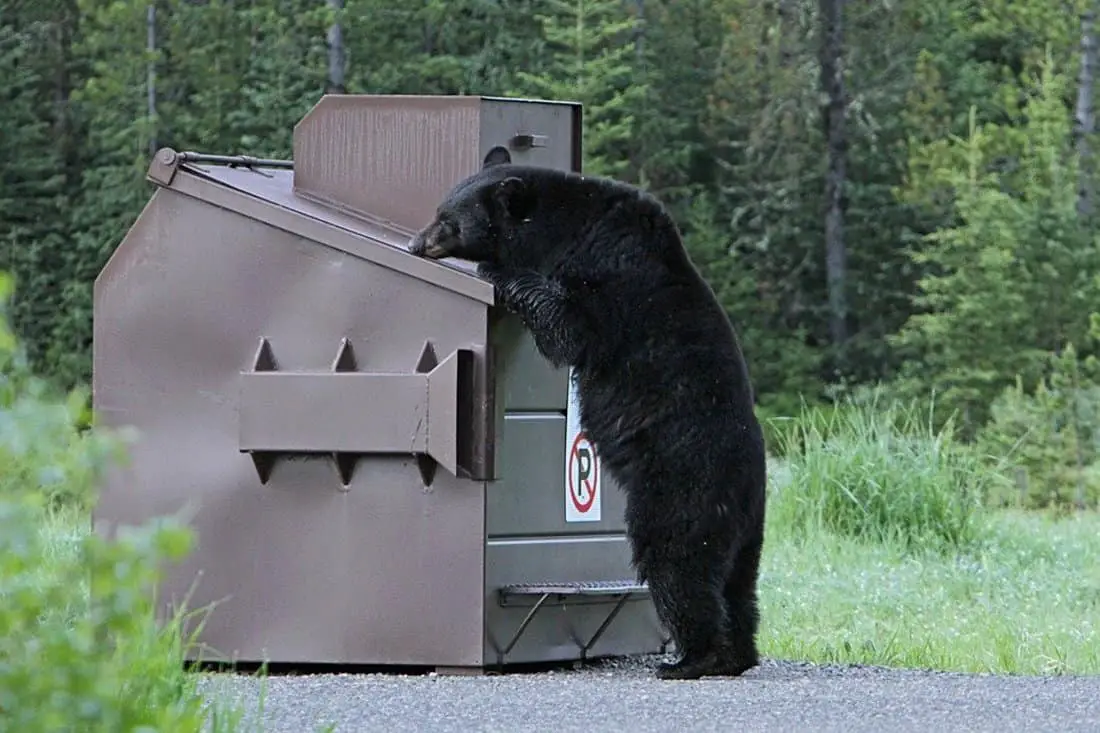
Yellowstone is fondly known as the bear country. There are so many of these big furry animals that no matter where you are in the park, you are bound to spot one. Over 700 bears reside within the park.
Bears are dangerous and on average, there is a bear attack every single year in Yellowstone. So, how do you hike safely in Yellowstone with all these bears roaming around?
Here is how to be bear aware:
- Signs that can show the presence of bears include bear footprints, torn-up logs, and opened anthills. You are also likely to spot some in places with food.
- Don’t hike alone in areas common with bears. Over 91 percent of bear attacks are happening to solo and duo hikers. Why? More people means more noise, something that bears avoids.
- Hike during the day. Bears are most active early morning, late evening, and at night.
- Avoid hiking through thick bushes, and if you must, make lots of noise to scare bears away.
- Always have a can of bear spray within reach and know how to use it.
3. Do Not Go Hot Potting in the Hot Springs
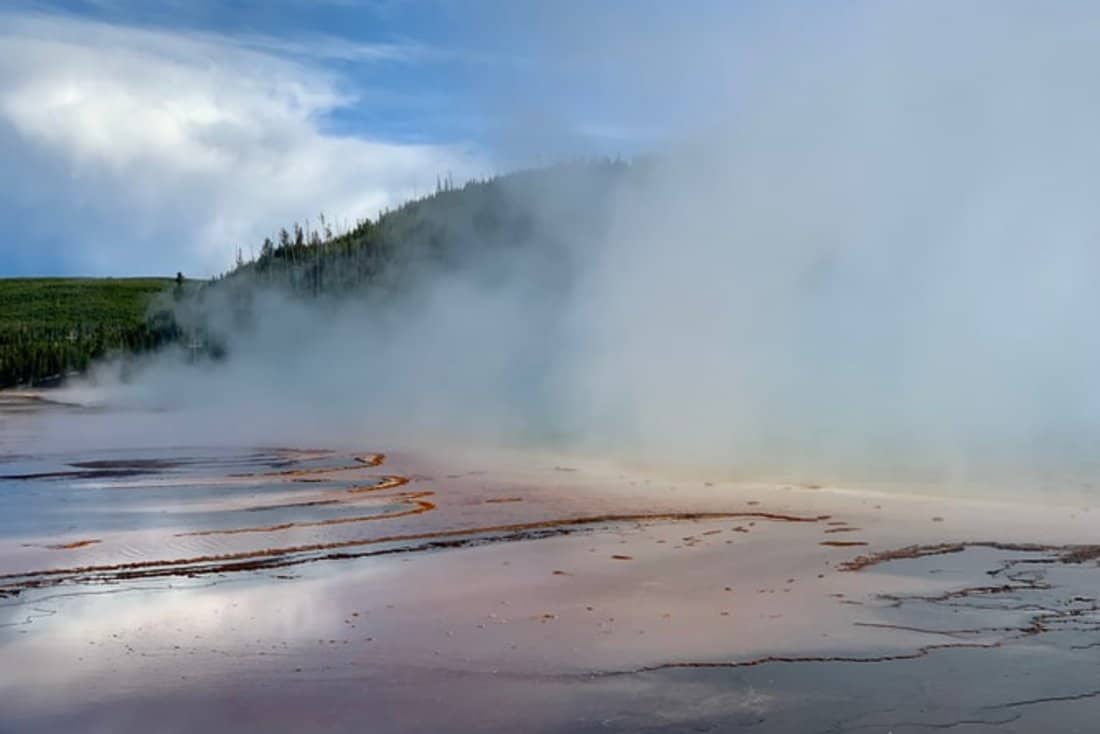
Hot potting is swimming or soaking feet in a natural hot pool. Just so you know, the activity is illegal.
Some of the major attractions in Yellowstone are the hot springs and hot pools. Popular hikes such as the West Thumb Basin Trail will take you right by the geysers. You have to be careful though, these pools of hot water can reach boiling temperatures (about 4560 F).
Water in the pools is hot and acidic enough to burn your skin off. So, to hike safely in Yellowstone, don’t go beyond marked areas near the hot springs. Back in 2016, a young man tried to ‘hot pot’. Instead, he fell into the water and was dissolved.
To date, there are over 20 reported deaths from these geothermal activities. There are also countless cases of injuries from walking on or too close to mud pots and steam vents.
4. Beware of Bison
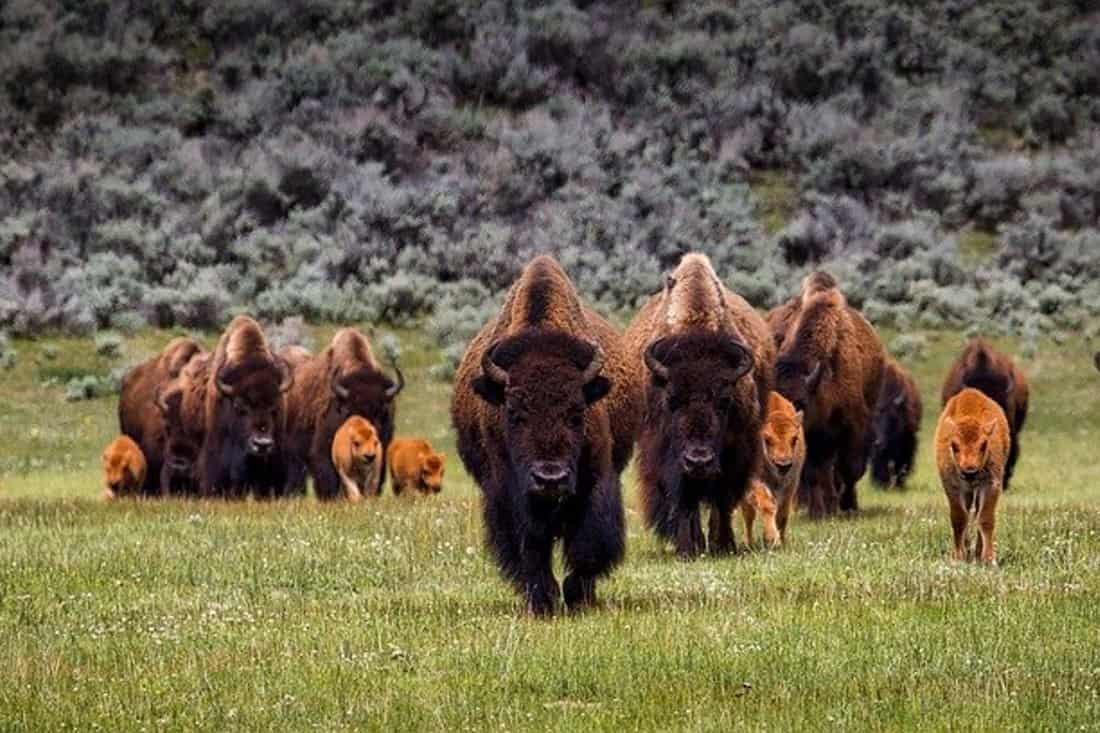
In Yellowstone National Park, you also have to worry about bison. Although bears are some of the most feared animals by hikers in America, these are types of hairy buffaloes that are likely to attack you three times more than bears.
Yellowstone Park has over 5,000 bison. While bison can appear calm and will generally stay away from humans, they are unpredictable. If for any reason it feels threatened, this animal will chase you down and gore you with its horns.
Here is how to handle a bison encounter:
- Stay as far away as possible from bison – at least 75 feet away.
- Unlike bears, making noise won’t scare a bison.
- Don’t engage them, a bison can run nonstop at a speed of 40 miles/hr for 5 miles. If attacked, play dead and protect your head and chest.
- Bison are herd animals, if you spot one, be on the lookout for others.
5. Stick to the Boardwalks and Trails
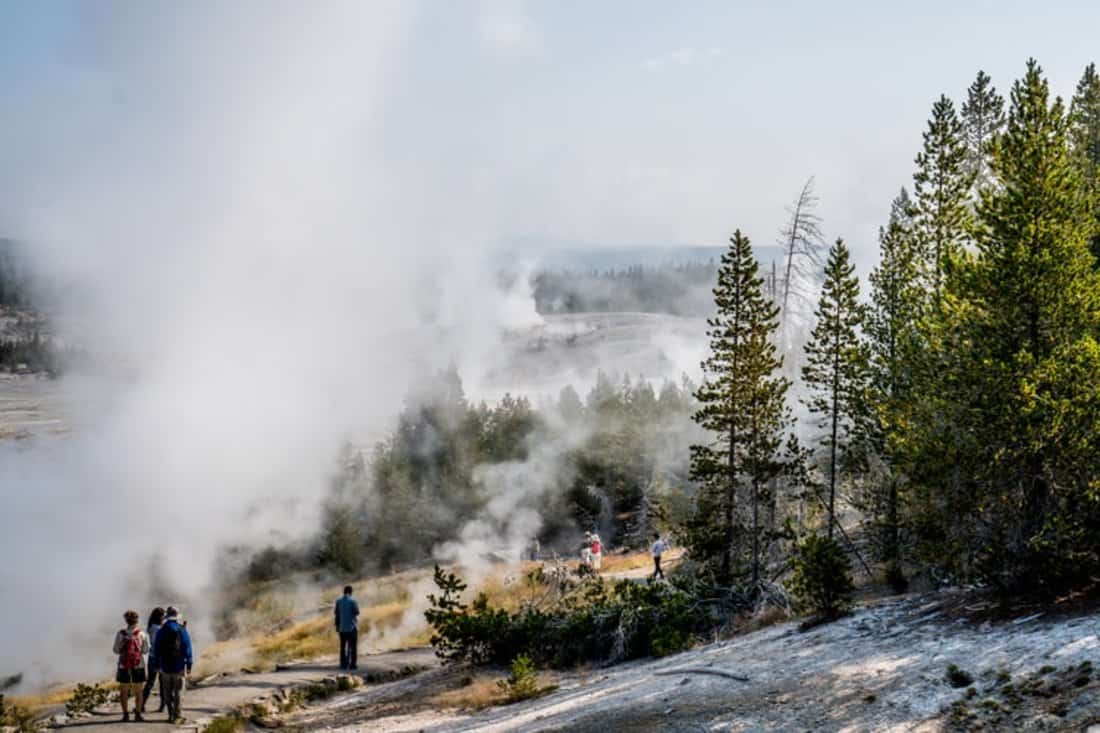
Yellowstone is one of the most dangerous National parks in the world if you don’t play by the rules. Besides the wild animals, there are natural formations such as thermal activities that make the ground unstable in certain locations
To keep you safe, the park has erected boardwalks and clearly marked trails. These paths run through the stable parts of the park. That said, you should not run on the boardwalks to reduce the chances of slipping into dangerous areas, such as hot pools.
Notably, headaches, skin, and eye irritation have been reported in areas near geysers in Yellowstone National Park. This is associated with fumes that are released when geysers erupt. To be safe, if you start feeling sick, just leave the area to seek fresh air.
6. Avoid Hiking by Dead or Burnt Trees
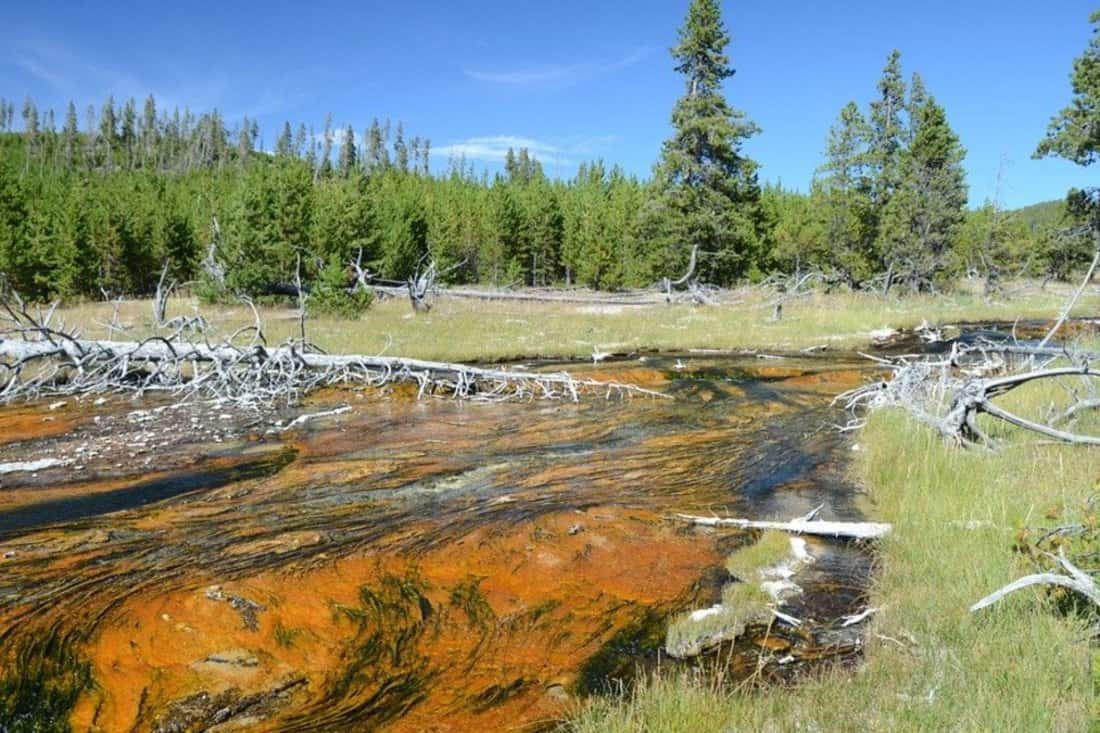
A great part of a hiking adventure is trekking through forests. However, hiking near trees in Yellowstone can be dangerous. The park is prone to wildfires ranging from 1 to 78 fires every year. Most of them occur during summers and usually go out on their own.
Afterward, burnt trees that are left standing are usually weak and may fall on their own or if you lean onto them. Also, most of the trees in this park are of pole pine variety. These are trees with shallow roots so, it’s safer to keep off wooded trails especially when there are strong winds.
Lastly, don’t set up camp near burnt trees or hang around areas with smoking trees. As the saying goes ‘if there is smoke, there is fire’. A forest fire ignites fast and burns violently.
7. Wear Appropriately Clothing
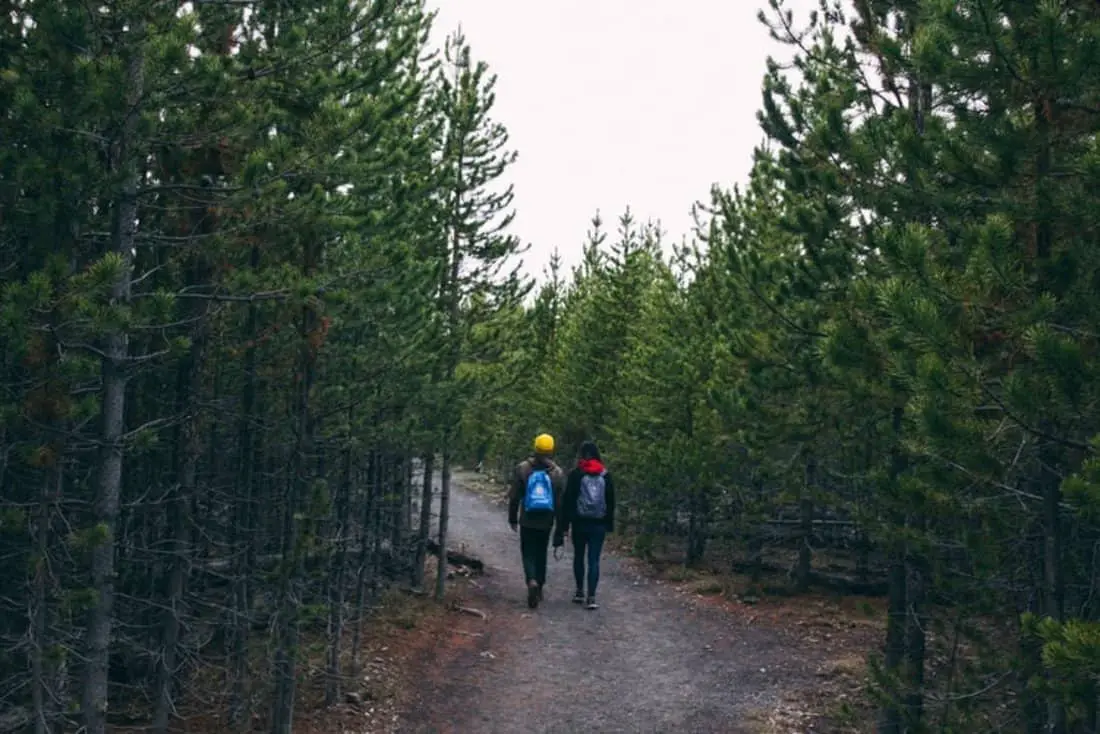
How safe is hiking in Yellowstone? Well… safety starts long before you reach the park. And it all has to do with what you are planning to wear. The temperatures in this part of the country tend to be extreme.
In winter the temperatures are below freezing and in summer they soar to about 900 F. With such conditions what you wear could be the difference between life and death.
Check the weather forecast to know what kind of weather to expect. If it’s hot, wear light to avoid heatstroke especially for long hikes. On the other hand, if the forecast says cold, wear heavy clothes to avoid frostbite and hypothermia.
Also, remember to wear appropriate hiking boots or carry snowshoes if you are planning to hike on snow-packed trails.
8. Carry Bug Spray and Mosquito Repellent
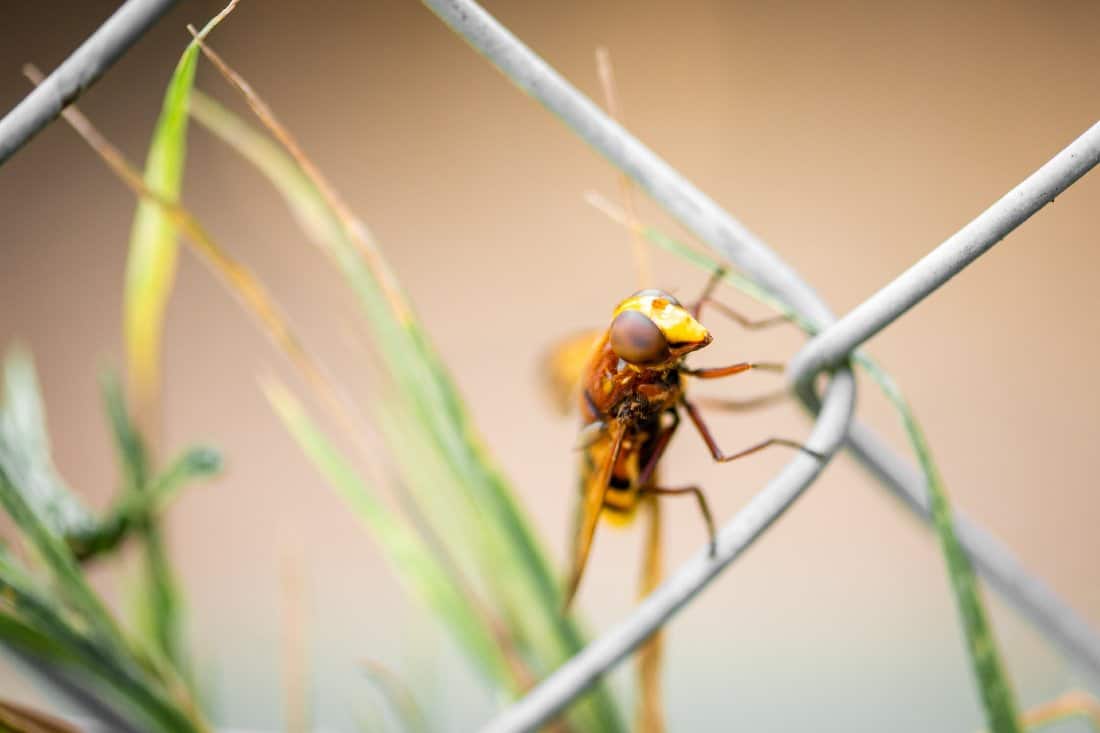
Hiking comes with a fair share of drawbacks including exposure to almost all types of bugs and insects. In Yellowstone, you will find crawling, flying, and bloodsucking bugs such as mosquitoes, ticks, fleas, and flies – much like the bugs found in Joshua Tree.
Apart from the park being a natural habitat for these small animals, the huge presence of large animals like elks and bison also attracts the parasites in large numbers.
Have bug spray in your backpack and preferably a DEET-based product. There are lots of mosquitoes, so be sure to slap on mosquito repellent during your time inside the park.
9. Be Elk Aware
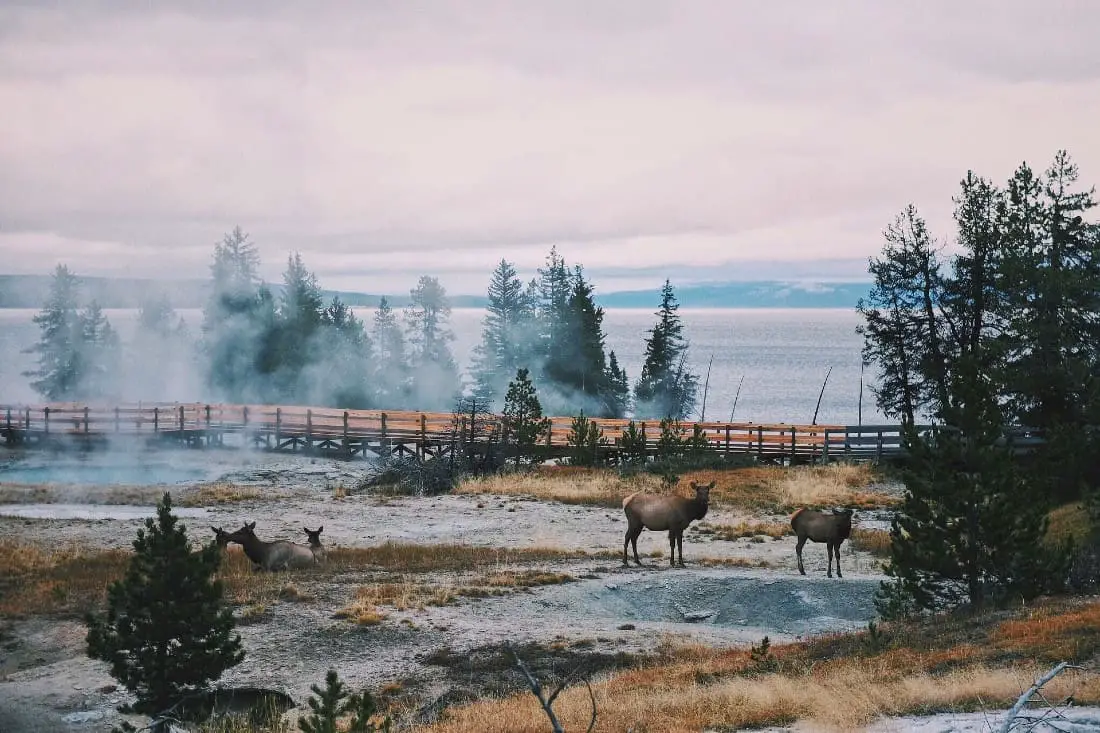
The other animals, away from bears and bison, that you should be wary of in Yellowstone Nationa Park are the elks. These are strong animals with large antlers. Unlike other wild animals that keep to themselves, elks are known to wander near humans.
To keep safe while hiking in Yellowstone with elks grazing around, here are some pointers:
- Be on the lookout near buildings and cars. That’s where elks sometimes hide their young ones.
- You will find large numbers of elks near the Mammoth Hot Springs.
- Approach blind corners slowly to avoid running into elks.
- Scare away elks by shouting loudly and looking bigger by waving your arms.
- Stay at least 75 feet away and if an elk is blocking the trail, where possible, walk around it or wait for it to move away.
10.Carry Enough Water
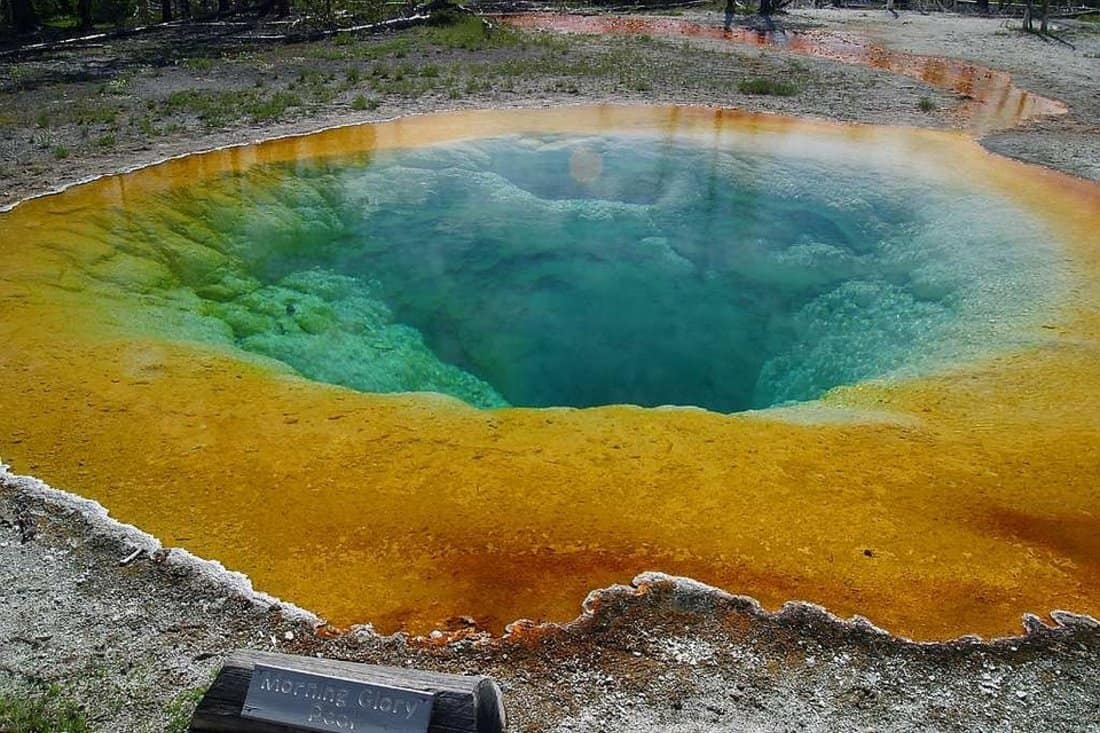
When it’s hot, you will get dehydrated fast due to the heat. Similarly, during cold weather, you can also get thirsty just as fast. Why is that?
Without going deep into the science, here is a short lesson: in cold weather, you feel less thirsty and you end up not drinking water. Also, you urinate more, a condition known as “Cold-induced Urine Diuresis” – making you even more dehydrated.
Unfortunately, unlike in other parks, the water that flows through Yellowstone is unfit for drinking. This is due to the thermal and volcanic formations that make the water acidic. So make sure that you carry not only enough water but also keep it in insulated bottles during winter (to avoid freezing).
When Is the Best Time to Go Hiking in Yellowstone?
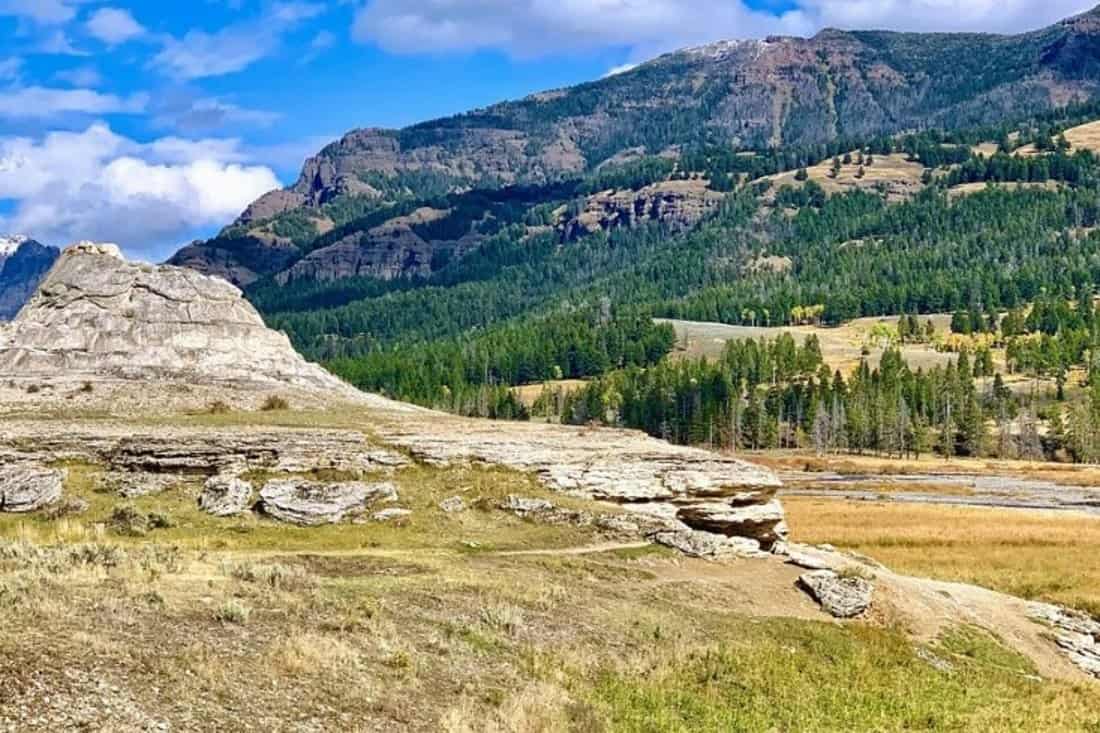
Yellowstone National Park is open all year round. Some areas are closed during winter but others are always open. While this is the case, you can experience varying weather ranging from extremely cold to pleasantly warm depending on the time that you choose to hike.
Below, I have given a summary of what you should expect in Yellowstone in every season. Based on this information, you can choose the time that suits your hiking adventure best.
Winter (November – March)
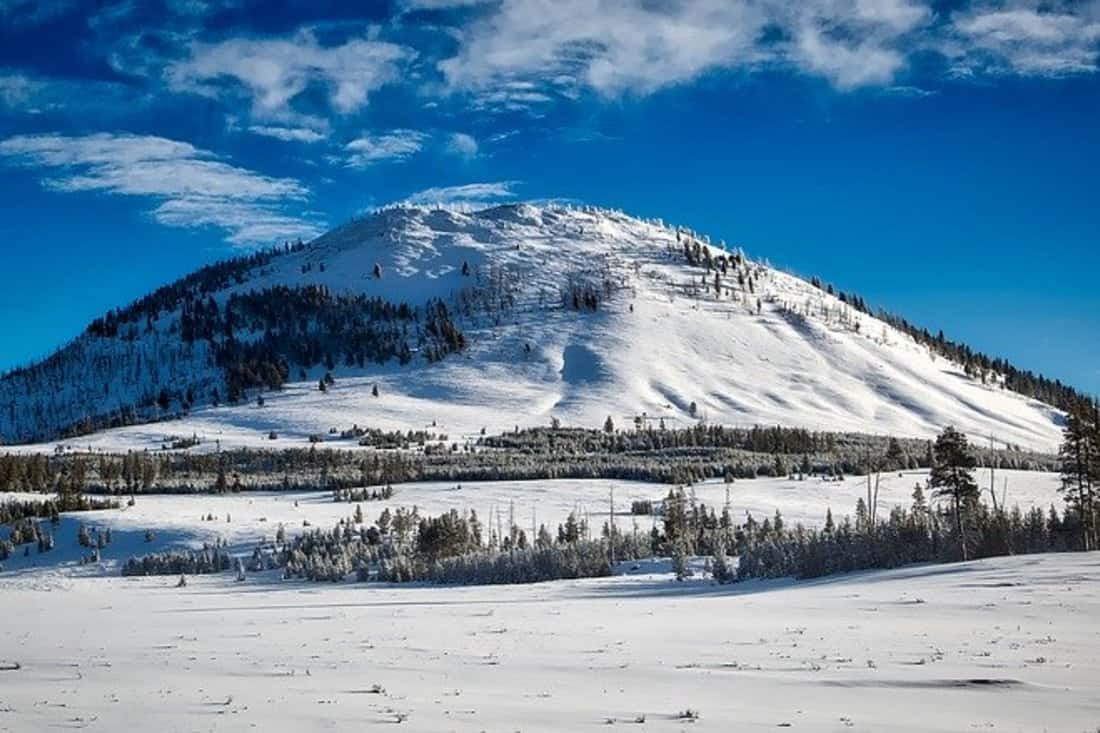
November-March is the coldest season in Yellowstone. The temperature can go as low as below the freezing point. Winter is also characterized by heavy snow and sometimes, wind.
During winter, only a few places are open in Yellowstone. The Mammoth Spring area and Old Faithful are examples of areas that remain open through winter. Here you can have short hikes around the immediate neighborhood and take in the breathtaking winter sceneries.
If you insist on hiking during winter, you better be appropriately dressed and practice hiking in snowshoes. While your winter boots may work in some areas, most of the trails that you can hike in Yellowstone will have enough snow for your boot to sink in.
Spring(April-May)
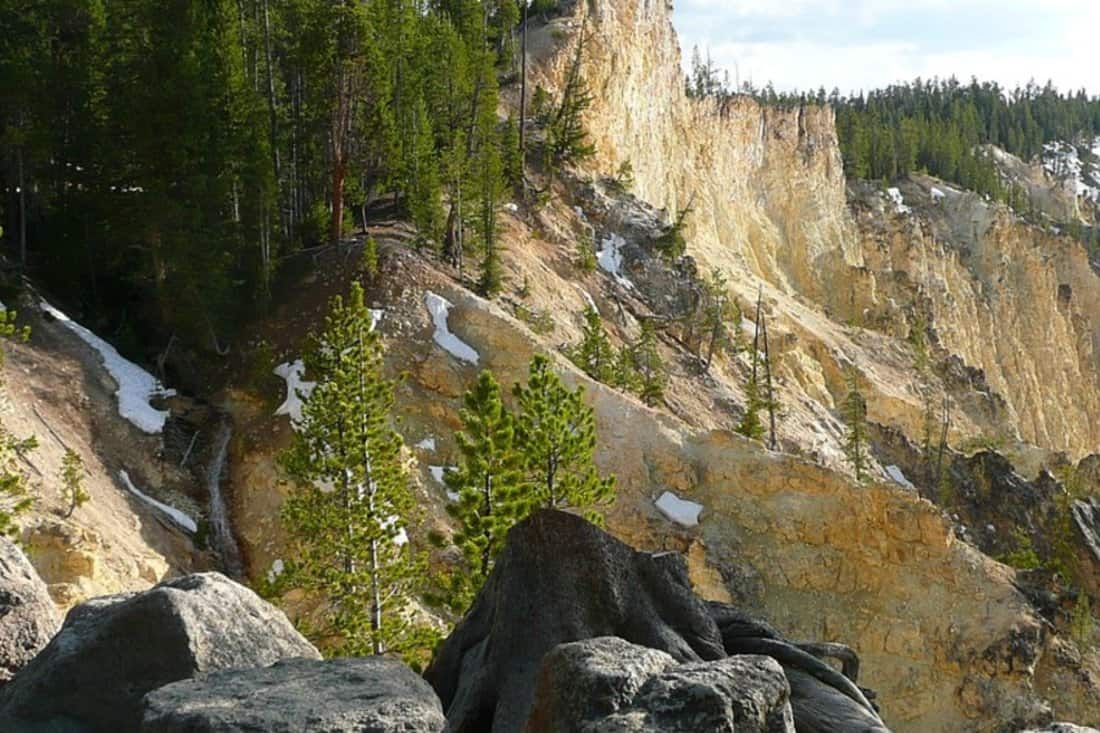
April-May is the time when the park is awakening from winter. Most of the winter snow has melted but some trails especially on higher grounds are still covered in snow. Many roads in the park also remain closed through spring. Where hiking trails are open, you will most likely encounter wet and muddy ground.
Spring weather varies from time to time. It can be snowing one day and shining to about 600F the day after. To be prepared when you go hiking, you will need layers of clothing, a warm jacket, and waterproof hiking boots.
Towards the end of May, more roads open, and more trails become accessible and less muddy as the weather warms up.
Summer (June-August)
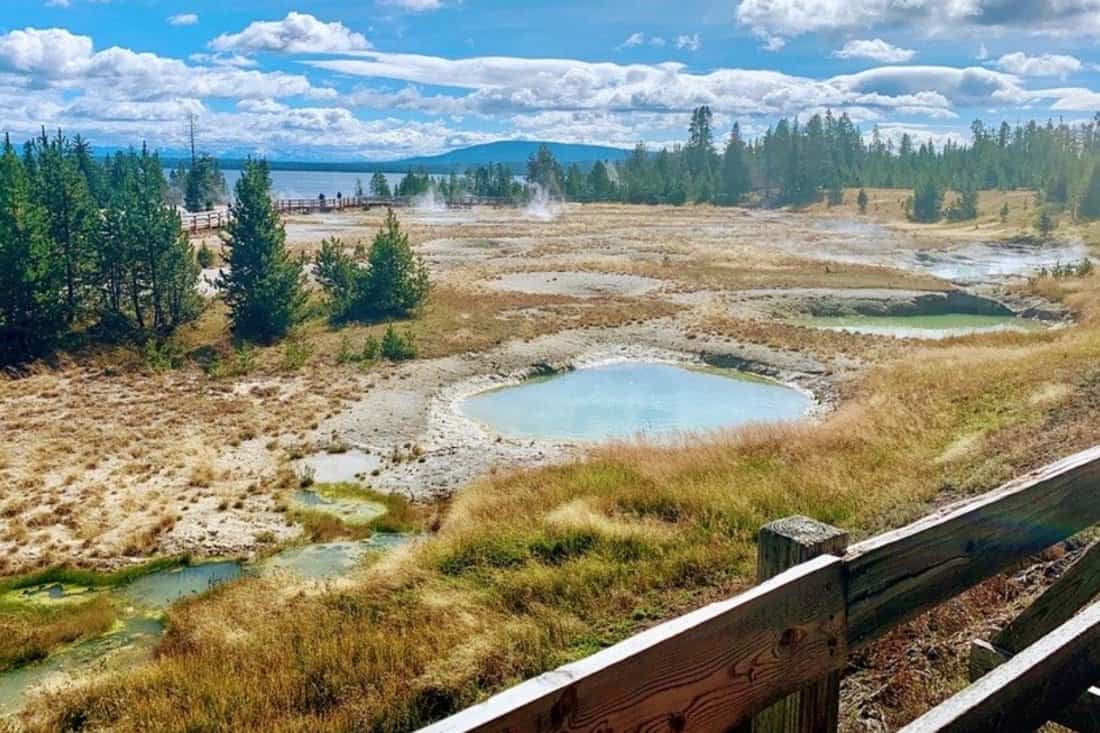
The summer season (June-August) is the busiest season in Yellowstone. The days are warm while the nights are cool. Even on the hottest days, the temperature rarely goes above 800F.
This also means that the park is crowded. Over 2 million visitors visit Yellowstone National Park in summer. For some reason, most hiking trails and especially in the backcountry are never much crowded.
All roads and other areas in the park are open. By July, all hiking trails including the ones in high elevations are open for hiking. Besides hiking, you can engage in so many other activities including swimming, rafting, camping, and sightseeing.
Fall (September – October)
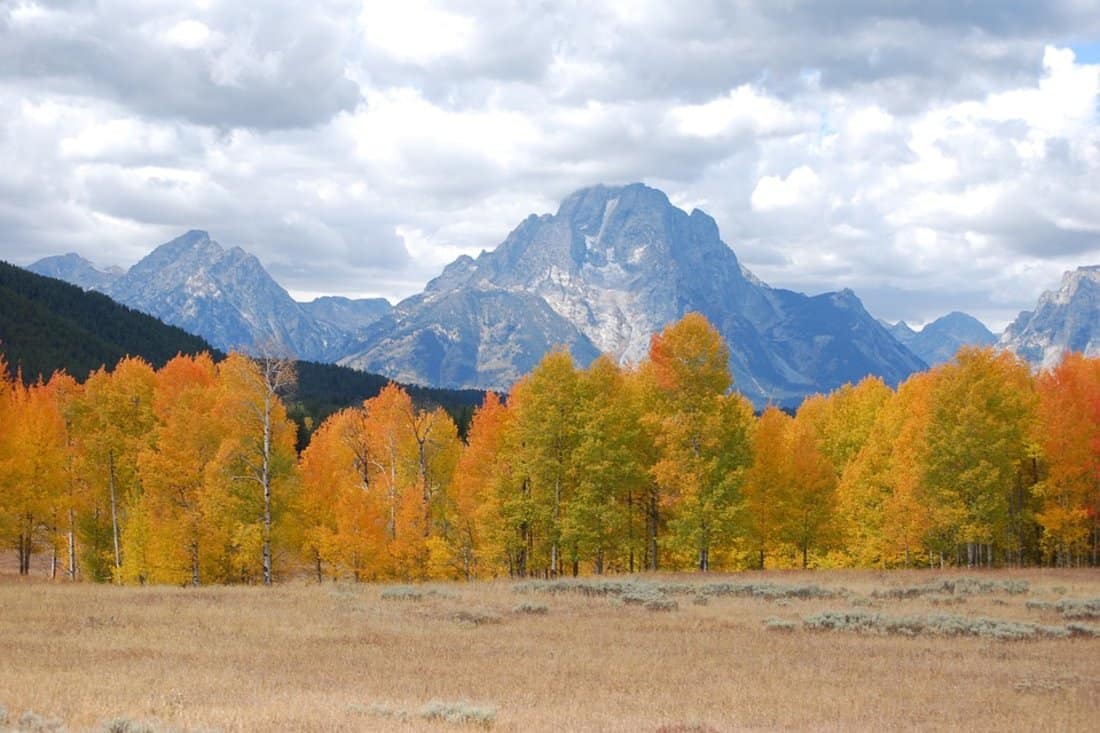
During fall (September-October) the weather is still mildly warm most of the time but unpredictable. Temperatures can change drastically from warm to freezing. It can also get windy or rainy without warning so its good to be prepared.
The whole park is beautiful as plants take on the fall colors and the summer crowds disperse. Hiking trails are still open through most part of the fall season and you can hike at even higher elevations. Towards the end of October though, it starts snowing as winter approaches. Therefore, most of the park areas start closing for winter.
Seasonal Happenings to Be Aware of While Hiking in Yellowstone
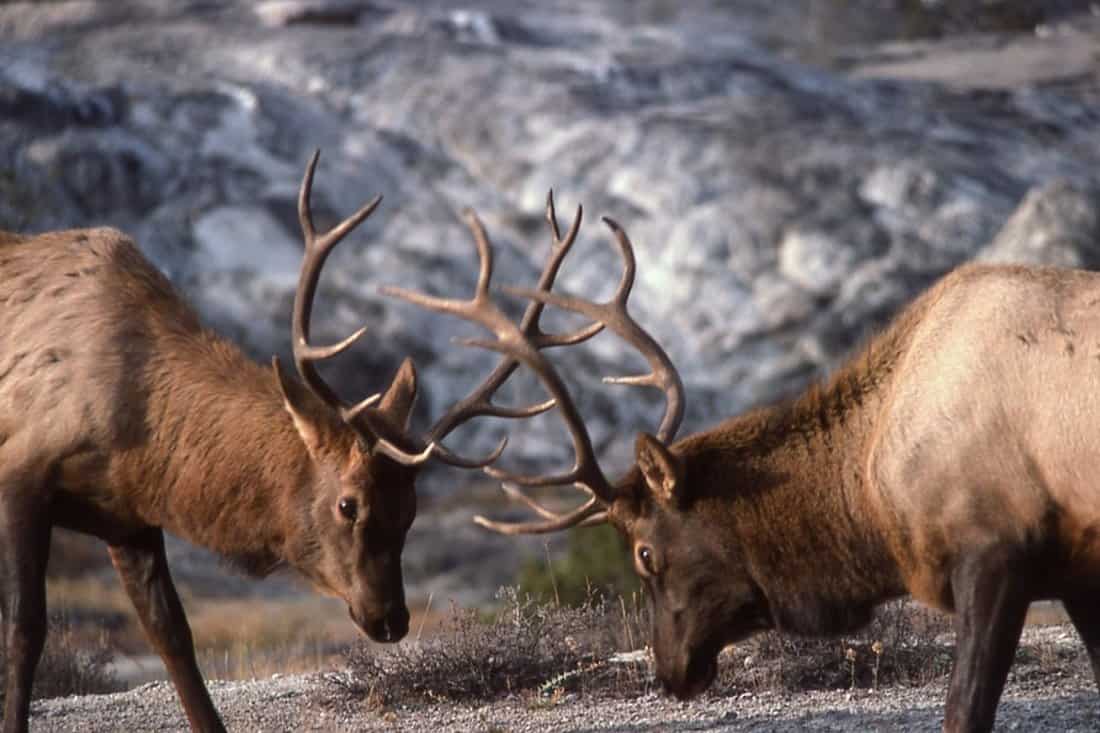
Besides familiarizing yourself with the weather and the state of hiking trails in Yellowstone, there’s something else you need to know – the seasons also come with some interesting events within the park. Do these occurrences determine how safe hiking in Yellowstone is? Definitely! Read on and you will find out why.
- During winter (November-March), most wildlife comes to lower elevations to look for food. You can usually see them near hot springs or geysers. You can spot bison, wolves, bighorn sheep, coyotes, and elks. Bears on the other hand usually hibernate in winter and are harder to spot. Snow packed roads get slippery which can be dangerous near thermal areas.
- During spring (April-May), there is significant wildlife activity. The bison will be migrating from Gardiner towards the park, wolf packs will be wandering in the Lamar valley while bears will be emerging from winter hibernation.
- Since food is scarce, bears are usually more aggressive as they protect their food from ‘enemies’. Animals like bears and elk will have their young ones in spring. They may act aggressively to protect them if they feel like you are a danger to them.
- Snowmelts in spring make rivers and streams very cold. This makes them dangerous to cross as they can cause a dangerously low body temperature, also known as hypothermia.
- In summer (June-August), most animals will wander freely in the morning and late in the evening when the weather is cooler. Bison, elk, and deer will even approach areas that are crowded. For bears, though, you are more likely to spot them along hiking trails. As summer temperatures warm up, wildlife moves to higher elevations within the park.
- Fall (September-October) is the mating season. You might experience bull elk, bull bison, and bighorn rams behaving weirdly and producing funny sounds trying to catch the attention of the females. As intriguing as it may look, remember to stay away. Why? You don’t want to appear like you are also competing for female attention.
- It is during the fall season when bears prepare to hibernate for the winter season. Hence, they walk about different parts of the park collecting food.
Interesting Facts About Yellowstone National Park
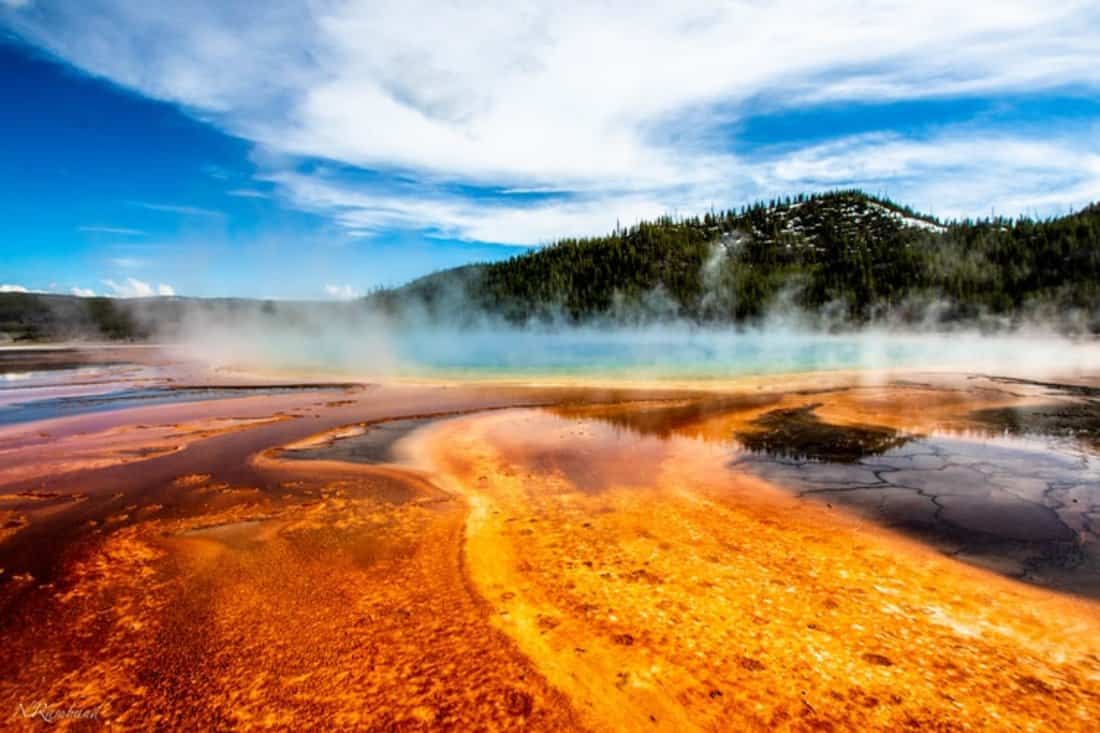
Throughout the article, I have mentioned grizzly bears, geysers, hot springs, bison, and other wonders which are really captivating to every Yellowstone visitor. We have also established that these wonders can become a threat to you if you are not careful.
Let’s now look at a few interesting facts about some of the best Yellowstone attractions:
- Yellowstone is home to more than 10,000 hydrothermal features. These are in four main types – hot springs, geysers, mud pots, and fumaroles.
- Yellowstone National Park hosts more than 500 active geysers. This accounts for more than half of the world’s geysers.
- There are more than 290 waterfalls in Yellowstone.
- There are about 1000 miles of hiking trails in Yellowstone.
- Bison have lived in Yellowstone continuously since prehistoric times. The bison herds are so large that they regularly cause traffic jams or rather ‘bison jams’ as they cross the roads.
- Old Faithful geyser got its name from its predictable eruptions since 1870. Today the intervals have slightly changed but still, eruptions can be expected every 92 minutes on average.
- Yellowstone’s elk don’t migrate – they move to lower elevations to seek food and shelter in order to calve. They don’t get out of the park.
- Over 67 species of mammals call Yellowstone their home. This is the largest concentration of mammals in the lower 48 states of the US.
Conclusion
So, is hiking in Yellowstone safe? It is definitely safe to hike in Yellowstone. The success of the park from 1872 to date is proof that the safety measures and guidelines put to place have worked over the years. So, how good are you at following instructions and guidelines? Your safety in Yellowstone may well depend on it.

